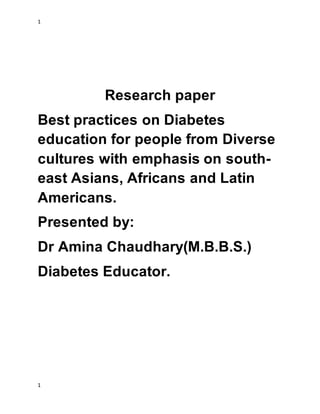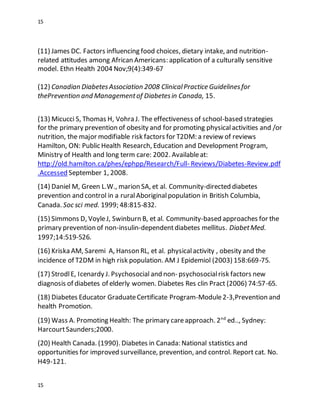1. The document reviews best practices for diabetes education programs catered to diverse cultural groups, including Southeast Asians, Africans, and Latin Americans. It summarizes 12 programs that have shown effectiveness.
2. The programs incorporate elements like peer educators, culturally-relevant content, language translation, and community organizations. Approaches include cooking demonstrations, stress management training, and group support.
3. For a diverse community like Saint James Town, the document recommends adopting practices like peer educators, multi-lingual materials, addressing spirituality and culture, and presentations at appropriate literacy levels to improve diabetes outcomes.

















